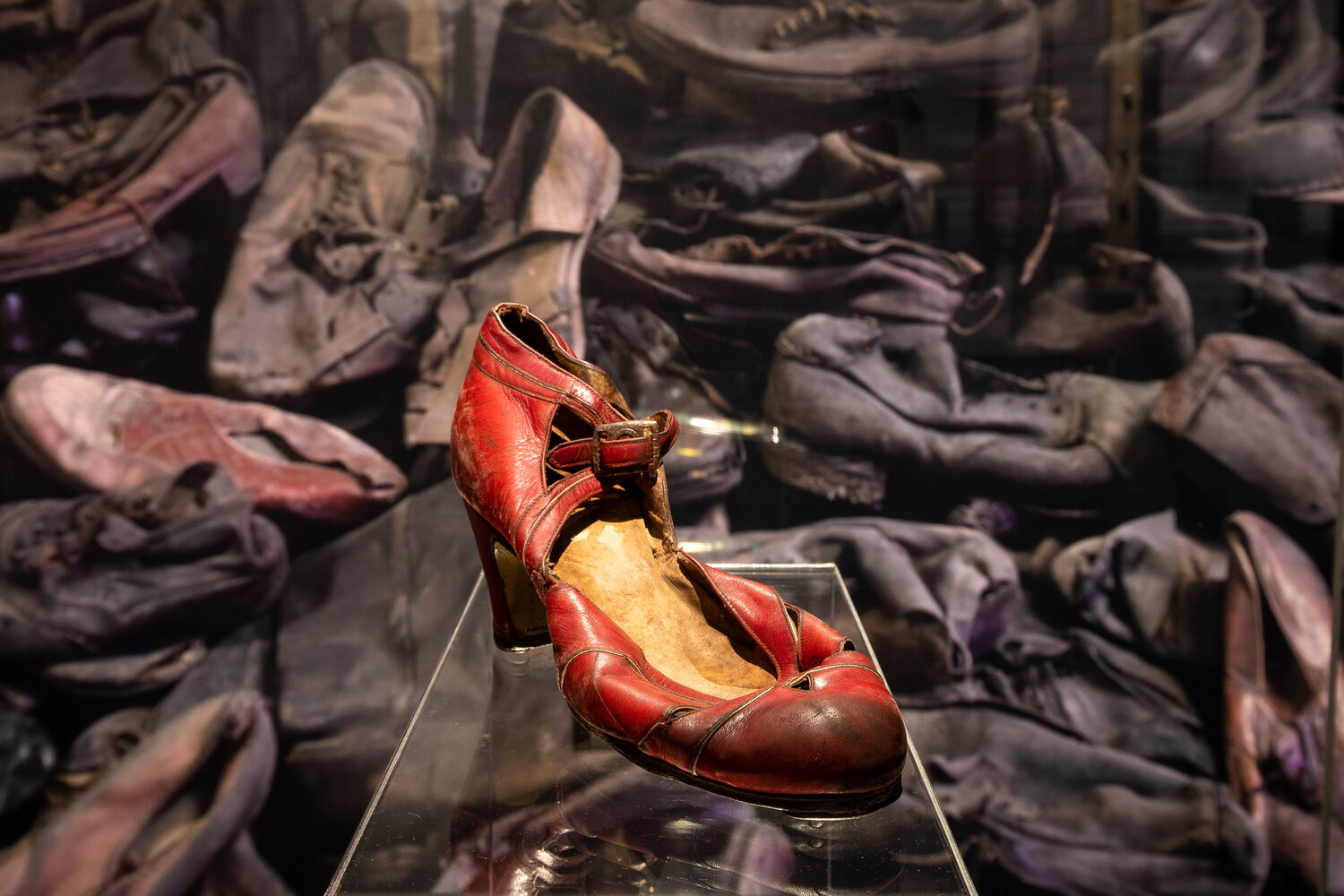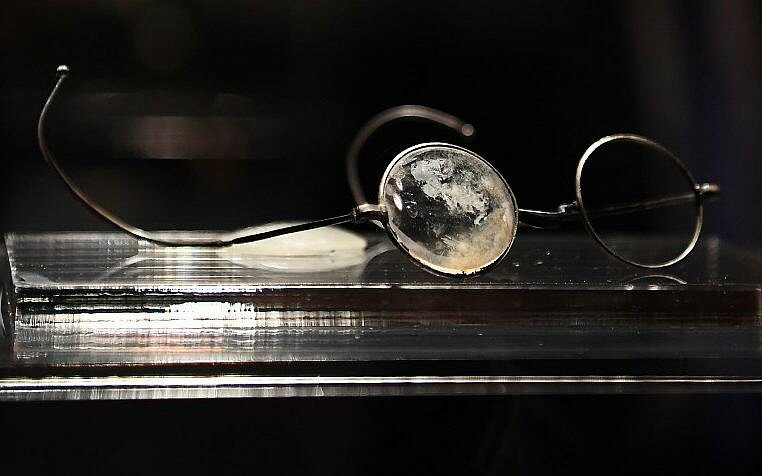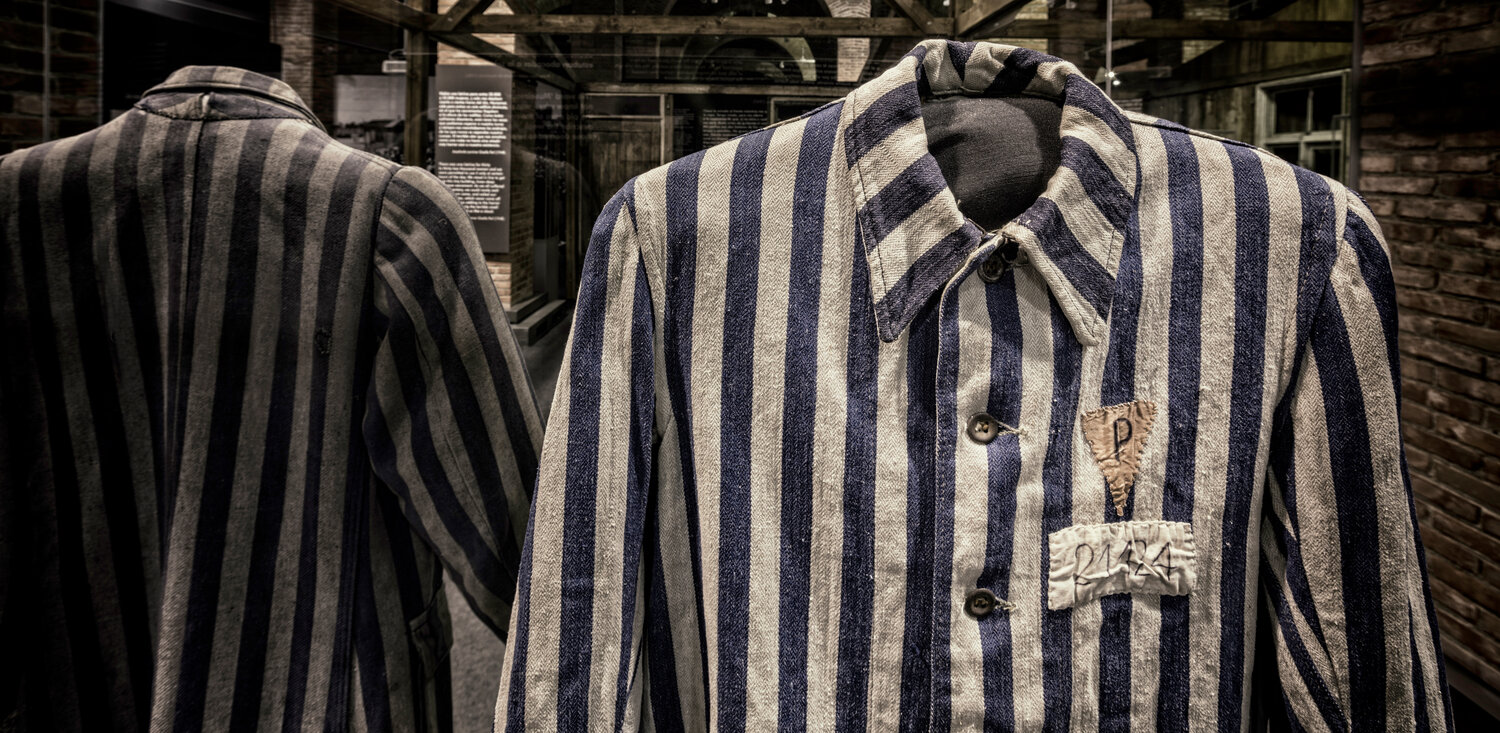and Southeastern Massachusetts
-
- Community
- In our schools
- Arts & Entertainment
- Photo galleries
- World
- Israel
- National
- Business
- Sports
- Israeli Newspapers
- Calendar
-
- Breaking the Glass
- Food
- Education
- Health
- In our schools
- Holidays
- Simchas
- Photo galleries
- Arts & Entertainment
- We Are Read
- Israeli Newspapers
- Candle lighting times
- Marketplace
- Obituaries
-
- The Conversation
- Dr. Stanley Aronson
- Mike Fink
- Larry Kessler
- Nancy Kirsch
- Kara Marziali
- Fran Ostendorf
- Patricia Raskin
- Rabbi James Rosenberg
- Daniel Stieglitz
- d'Var Torah
- Guest columnists
- Letters to the editor
- Podcasts
Review: Auschwitz. Not Long Ago. Not Far Away
Touring exhibition turns artifacts into testimony’s ambitious sister
“Auschwitz. Not Long Ago. Not Far Away” runs through Sept. 2 at The Castle at Park Plaza, 130 Columbus Ave., Boston, MA. Go to theauschwitzexhibition.com for timed-entry tickets, which are $34.95. Tickets include a complimentary audio guide.
BOSTON, MASS. – Dramatic narratives built from historical and archival materials have been called “testimony’s ambitious sister” by the late South African Nobel Peace Prize recipient Desmond Tutu. They provide a voice for ordinary, silenced people who have lived through or died during extraordinary circumstances, and have the power to break stereotypes, enhance understanding and foster empathy.
“Auschwitz. Not Long Ago. Not Far Away” provides that narrative for the approximately one million Jews and tens of thousands of Polish political prisoners, Sinti, Roma and Soviet POWs, Jehovah’s Witnesses and those the Nazis deemed homosexual, disabled, criminal, inferior or adversarial in countless other ways who met their demise at the Auschwitz concentration camp in Oświęcim, Poland. The traveling exhibition is having its New England premiere at The Castle at Park Plaza after opening in Madrid’s Arte Canal Exhibition Centre in 2017.
Over 700 original artifacts housed in the Auschwitz-Birkenau Memorial, located on the site of the Auschwitz facility, and from over 20 other international museums – including Yad Vashem in Israel and the United States Holocaust Memorial Museum in Washington, D.C. – have been brought together here.
The objects alone, spread across 10,000 sq. ft. of exhibition space, effectively establish the time and place of one of history's darkest periods. But it’s the accompanying narrative and the manner of these objects’ presentation that make that time seem as if it were not so long ago and that place feel as if it were not so far away.
The exhibition begins with the display of a single red dress shoe of an unidentified female deportee to Auschwitz, which causes a quick, involuntary inhale that takes seemingly forever to release. Expecting more of the same as you round the corner, the exhibition anticlimactically traces the development of European antisemitism and Nazi ideology and tells of the transformation of Oświęcim from an ordinary Polish town to the most significant Nazi site of the Holocaust.
“We wanted to immediately offer context for what awaits visitors a bit further into the exhibition,” noted Pawel Sawicki, deputy spokesperson for the Memorial at the Auschwitz-Birkenau State Museum and this exhibition’s project coordinator, when asked about its layout and design. “Before visitors entered the authentic world of Auschwitz, we wanted to provide them with insight and information.”
This seems a wise choice, for what awaits us as we move forward is overwhelming.
There’s no shortage of enlarged, historical, black-and-white photographs on the walls depicting unidentified people awaiting deportation – a sampling of those sent to Auschwitz. These are powerful and painful images. But also on display is the occasional close-up of an identified individual who made that journey. There’s Settela Steinback, one of the 23,000 Roma prisoners, being transported from the Netherlands to Auschwitz, in 1944, where she was murdered at the age of 9.
The photographs are surrounded by objects taken from the suitcases packed by these unaware deportees and stockpiled by the SS garrison members who staffed the camp system. Most of the items are without personal provenance, a testament to the chaotic and surreal circumstances that defined the capture, transport, selection and systemic dehumanization of their owners.
But the power of these items is intensified in the instances when they are attributed to specific owners. There’s the wooden spoon issued to prisoner 30921, Stanisław Switaj, upon his arrival in April 1942, that survived his murder two months later. There’s the concentration camp uniform worn by Marian Kostuch, one of over 130,000 Polish prisoners of war who were assigned to Auschwitz. The encased three-dimensional objects shed their utilitarian function in exchange for historical, ethnological significance. And onlookers gain a more personal connection with a bygone era and the two-dimensional images of those innocent inhabitants. Suddenly, the 80 years and over 4,100 miles between the images, the artifacts and us no longer exist.
Piotr Cywiński, director of the Auschwitz-Birkenau Memorial, noted that “the tragedy of Auschwitz told through this carefully curated exhibition forces every visitor to bear witness to this horrifying chapter of human history and build a future shaped by remembrance.” Yes, it does.
In addition to the display of personal objects of prisoners, the exhibition includes concrete posts that were part of the barbed wire fence of the Auschwitz II-Birkenau camp. Artifacts that depict the world of the Nazi perpetrators, including a desk and other possessions of the first and the longest serving Auschwitz commandant, Rudolf Höss, add stirring context.
“Hatred, racism, antisemitism and intolerance are, unfortunately, concepts we still have to face nowadays,” said exhibition director Luis Ferreiro in an earlier interview in The Times of Israel. “Therefore, it is of vital importance to remember the road that led to Auschwitz and the consequences it had.”
This is made perfectly clear in the short film on display by the exhibition’s exit that shows the normal, naïve existence of pre-WWII families in Austria, Poland, the Netherlands, Croatia and Czechoslovakia. Quite the poignant juxtaposition to the red shoe on display at the exhibition’s entrance. And the cause of yet another quick, involuntary inhale that has yet to release itself.
BOB ABELMAN is an award-winning arts and entertainment critic who formerly wrote for the Austin Chronicle and Cleveland Jewish News. He writes occasionally for Jewish Rhode Island.
Keywords
Exhibit, Boston, Holocaust, Auschwitz

401 Elmgrove Avenue
Providence, RI 02906
(401) 421-4111












